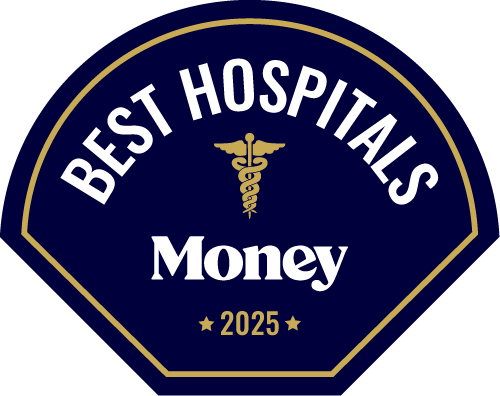To determine the best hospitals for cardiac care, Money compiled and analyzed data on over 2,300 hospitals.
The 75 stand-out facilities are ones that offer deep expertise – based, in this case, on data that reflects the overall experience of the cardiologists and other heart specialists who work at each hospital.
Our data partners for this ranking were Denniston Data and Definitive Healthcare. We also relied on publicly available data from the American College of Cardiology.
Here’s a closer look at how we determined the winners.
Narrowing the list to high-quality facilities overall
We began shaping the list by limiting it to short-term, acute-care facilities that have received at least three-star quality and patient ratings from the Centers for Medicare & Medicaid Services (CMS).
The CMS rating system is based on five key factors that are weighted as follows:
- Mortality (22%): reflects the death rates related to cardiovascular issues, strokes, pneumonia and treatable complications after surgery
- Safety (22%): tracks the rate of infections associated with certain surgeries, IVs and catheters and rates of complications after specific procedures
- Readmission (22%): considers how often some patients are readmitted to the hospital, along with how long they stayed and whether there were unplanned visits for outpatient treatment
- Patient experience (22%): gauges whether patients had a positive experience based on their self-reported ratings of how well their doctors and nurses communicated with them; other factors include whether their bathroom was clean and their room was quiet at night
- Timely and effective care (12%): estimates how quickly patients received care for chest pain or strokes; how long they stayed during an ER visit; percent of health care staff who are vaccinated for flu and COVID-19 and other time-sensitive metrics
While the CMS ratings reflect the hospital’s overall quality, across all types of care, it’s worth noting the presence in the data of several metrics related to cardiac treatment, and emergency heart care in particular. These include readmission and mortality rates for heart attack and heart failure patients, as well as how quickly a patient exhibiting heart-attack symptoms received care.
Besides being used as a filter, Money also weighted hospitals’ CMS ratings at 25% of their overall score.
Highlighting cardiac expertise
As with our other hospital lists, we then turned to the experience of hospital providers to begin determining how the facilities should rank against one another. Our data partner Denniston Data measures quality care by identifying high-performing doctors and other health care providers based on their level of experience in particular areas – in this case with cardiac procedures.
We rewarded hospitals for their staffs’ collective experience in the form of a Composite Ranking Score (CRS). To be considered for this sub-ranking, facilities must have had at least 10 active cardiologists or cardiac surgeons on staff who could be measured by cardiac experience.
The CRS was a percentile that we then translated into a letter grade. The letter grading system is based on this percentage range:
- A+ is a CRS score of 95% to 100%.
- A is 85% to 94.99%.
- A- is 80% to 84.99%.
- B+ is 75% to 79.99%.
- B is 65% to 74.99%.
- B- is CRS 60% to 64.99%.
- C+ is 55% to 59.99%.
- C is 45% to 54.99%.
- C- is 40% to 49.99%.
- D+ is 35% to 39.99%.
- D is 25% to 34.99%.
- D- is 20% to 24.99%.
- F is below 20%.
The resulting grade was considered as part of a broader “hospital resources” component, that also gauged how many A-rated doctors are on staff, and whether the most-commonly performed procedure at the hospital was cardiac related. These factors were weighted at 25%.
The third scoring component we devised looked at the breadth of cardiac services offered by each hospital. Weighted at 25%, this section measured if a hospital has a dedicated coronary intensive care unit, and if it performs standard emergency heart-attack procedures, cardiac surgery as well as services related to electrophysiology, transcatheterization, heart valve replacement and others — and, if so, whether the procedure areas were accredited by the ACC.
For the remaining 25%, our quality component analyzed clinical cardiac metrics such as excess readmission rates for heart attacks, heart failures and coronary artery bypass grafts. We also rewarded hospitals that received quality-care designations, including HeartCARE Center status and Chest Pain Awards from the ACC.
Measuring price transparency
Money supplemented the weighted factors in our analysis with a proprietary “Price Transparency” grade for each hospital. This long-standing metric in our rankings evaluates how closely a facility’s final bills match its publicly estimated prices.
In 2025, we updated this analysis to account for the amount of charity care — or free care — hospitals provide to qualifying low-income patients.
We assessed how well a hospital’s posted prices (chargemaster rates) align with actual revenue collected, whether from Medicare, insurers, or patients. In short: How does a hospital’s sticker price compare to what’s actually paid?
To do this, we used two ratios. One compared listed charges to total patient payments, including from the uninsured. The other looked at the gap between gross charges and Medicare-approved reimbursements. Both were standardized on a 100-point scale and converted to letter grades using our existing system.
To avoid penalizing hospitals that offer more free care, we deducted the value of charity care from gross charges before calculating the ratios. This adjustment ensures fairness for facilities with high levels of uncompensated care.
Even with that adjustment, patients often pay significantly less than the posted prices. While this may seem like discounting, it reflects the reality that chargemaster rates are typically set much higher than what insurers or patients actually pay.
It’s also worth noting that the price transparency grade does not measure affordability. A hospital with a B+ may not be cheaper than one rated C — the grade only reflects how accurately a facility’s estimates predict real costs.
While this transparency grade does not factor into a hospital’s final score or rank, we include it to help patients assess whether a facility’s price estimates are likely to reflect their actual bills.
Vetting the top-scoring hospitals
Not every concern about a hospital shows up in the data we analyzed. That’s why Money also conducted an individual review of top-rated hospitals to flag any red flags that go beyond the numbers.
As a result, we removed several hospitals where patient care had clearly broken down in ways that pointed to deeper problems. These issues included confirmed cases of sexual assault, racial discrimination, unnecessary treatment and malpractice.
What remains is Money’s editorially vetted list of the 75 highest-rated hospitals for quality cardiac care.
Key data sources: Denniston Data Inc; Definitive Healthcare
Supplementary data: Agency for Healthcare Research and Quality; American College of Cardiology; Centers for Medicare & Medicaid Services; RAND Health Care






